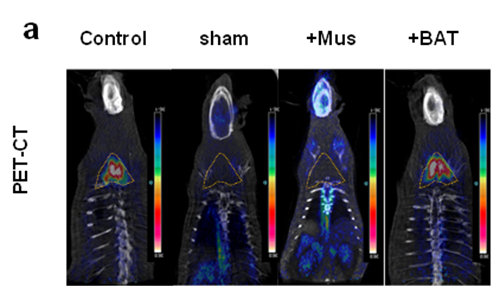New Function of BAT in PCOS Treatment
Polycystic ovary syndrome (PCOS) is one of the most common reproductive endocrine disorder affecting women of reproductive age which is characterized by hyperandrogenism, reproductive polycystic ovaries and chronic anovulation. Furthermore, PCOS is a complex and heterogeneous syndrome; since it is associated with a high risk for the development of insulin resistance, type 2 diabetes (T2D), obesity, dyslipidemia and cardiovascular disease.
In addition to energy storing white adipose tissue (WAT), humans and small mammals possess energy burning brown adipose tissue (BAT). Accumulating evidences indicating that BAT is composed of multilocular lipid droplets and a large number of mitochondria that generate heat tomaintain body temperature through a process called nonshivering thermogenesis.
Recently we found that BAT transplantation in PCOS rat significantly increased insulin sensitivity and eventually ameliorated hyperandrogenism, acyclicity and infertility. In the additional study, we also showed that rutin, a kind of flavonoid, can enhance BAT activity and induce beige adipocytes formation in WAT, contributing to ameliorated insulin resistance and PCOS phenotypes. Taken together, these data suggest that BAT is one of the important organs regulating the features of PCOS and the increase of BAT mass or its activity might provide a new therapeutic strategy for the treatment of PCOS.

Rat model in PET-CT
